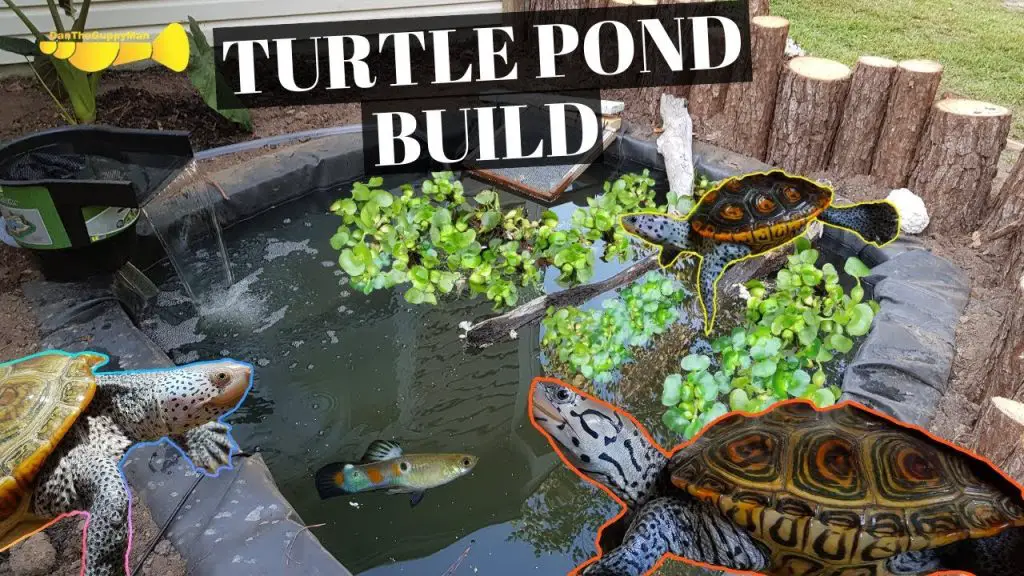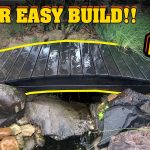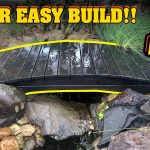How to Build a Turtle Pond in Your Backyard
If you’re a turtle enthusiast or simply want to add a unique and captivating feature to your backyard, consider building a turtle pond. Creating a turtle pond can be a rewarding and enjoyable experience, providing a natural habitat for turtles while enhancing the beauty of your outdoor space. In this guide, we’ll walk you through the step-by-step process of building a turtle pond in your backyard, from planning and design to construction and maintenance.
Planning Your Turtle Pond
Before you start digging, it’s important to carefully plan and design your turtle pond. Consider the following factors:
Location: Choose a suitable location for your turtle pond, ensuring it receives a good balance of sunlight and shade throughout the day. Avoid areas with excessive foot traffic or where potential predators may pose a threat to the turtles.
Size: Determine the size of your turtle pond based on the number and species of turtles you plan to house. A general rule of thumb is to allow at least 10 gallons of water per inch of turtle shell length.
Depth: The depth of the pond will depend on the species of turtles you intend to keep. For most aquatic turtles, a depth of 18 to 24 inches is recommended to provide ample swimming space and prevent escape.
Design: Consider the overall design of the pond, including the shape, landscaping, and any additional features such as rocks, logs, or plants to create a natural and aesthetically pleasing environment for the turtles.
Construction Materials and Equipment
Once you have a clear plan in place, gather the necessary materials and equipment for building your turtle pond:
Pond liner: Choose a durable and puncture-resistant pond liner to create a watertight barrier for your pond. PVC or rubber liners are popular choices for their longevity and flexibility.
Shovel and digging tools: Prepare for some physical labor by equipping yourself with a sturdy shovel and other digging tools to excavate the pond area.
Filter and pump: To maintain water quality and circulation, invest in a reliable filter and pump system suitable for the size of your turtle pond.
Rocks and gravel: Enhance the aesthetics of your turtle pond by incorporating natural rocks, gravel, and substrate to create a functional and visually appealing habitat.
Plants: Consider adding aquatic plants such as water lilies, cattails, and duckweed to provide shelter, oxygenation, and a natural food source for the turtles.
Building Your Turtle Pond
With all the necessary materials and equipment on hand, it’s time to start building your turtle pond. Follow these steps to bring your vision to life:
1. Mark the pond perimeter: Use spray paint or stakes and string to outline the shape and size of your pond, ensuring it fits seamlessly into your backyard landscape.
2. Excavate the pond: Begin digging within the marked perimeter, gradually shaping the pond to the desired depth and contour. Remove any rocks, roots, or debris to create a smooth and level bottom.
3. Install the pond liner: Once the excavation is complete, carefully position and secure the pond liner, ensuring it covers the entire pond area with some overhang to prevent water seepage.
4. Add rocks and substrate: Create a naturalistic environment by arranging rocks and gravel around the perimeter and on the pond floor. This not only enhances the aesthetics but also provides basking and hiding spots for the turtles.
5. Integrate the filter and pump: Install the filter and pump system according to the manufacturer’s instructions, ensuring proper water circulation and filtration to maintain a healthy aquatic environment.
6. Fill the pond with water: Use a garden hose or other water source to gradually fill the pond, allowing the liner to settle and conform to the contours of the excavation.
7. Add aquatic plants: Introduce a variety of aquatic plants to the pond, strategically placing them to provide shade, shelter, and natural filtration for the water.
8. Monitor water quality: Test the water parameters regularly and make adjustments as needed to maintain optimal conditions for the turtles, including temperature, pH, and ammonia levels.
Introducing Turtles to the Pond
Once your turtle pond is fully constructed and the water quality is stable, it’s time to introduce your turtles to their new habitat. Here are some important considerations for acclimating turtles to the pond:
Acclimation period: Gradually introduce the turtles to the pond by placing them in a separate container of pond water within the pond itself. This allows them to adjust to the new environment without feeling overwhelmed.
Monitoring behavior: Observe the turtles closely as they explore their new surroundings, ensuring they are adapting well and showing signs of normal behavior such as swimming, basking, and foraging.
Feeding and care: Provide a varied and balanced diet for the turtles, including commercial turtle pellets, live or frozen prey, and fresh vegetables. Monitor their health and behavior regularly to ensure they are thriving in their new pond environment.
Ongoing Maintenance and Care
Building a turtle pond is just the beginning – ongoing maintenance and care are essential for the health and longevity of the pond and its inhabitants. Here are some key maintenance tasks to keep your turtle pond in optimal condition:
Water quality testing: Regularly test the water parameters using a reliable test kit to monitor pH, ammonia, nitrite, and nitrate levels, making adjustments as needed to maintain a healthy aquatic environment.
Filtration and cleaning: Clean the pond filter regularly to remove debris and maintain efficient water circulation. Periodically remove any accumulated debris or algae from the pond to prevent water quality issues.
Feeding and nutrition: Ensure the turtles receive a balanced and varied diet, adjusting their feeding schedule and portions as needed based on their activity level and growth.
Habitat enrichment: Continuously assess and enhance the pond environment by adding new plants, rocks, or other features to provide stimulation and natural behaviors for the turtles.
Health monitoring: Monitor the overall health and behavior of the turtles, promptly addressing any signs of illness, injury, or abnormal behavior with appropriate veterinary care.
Conclusion
Building a turtle pond in your backyard can be a fulfilling and enriching endeavor, providing a captivating and naturalistic habitat for turtles while enhancing the beauty and tranquility of your outdoor space. By carefully planning, constructing, and maintaining your turtle pond, you can create a thriving ecosystem that brings joy and fascination to both you and your shelled companions for years to come. So, roll up your sleeves, grab your shovel, and embark on the journey of creating a haven for turtles right in your own backyard.





